Aquarium Invaders Part 2: Photographs
The photos below show examples of the "pond critters" that often appear in aquariums. If you look at your aquarium debris with a microscope, you are almost certain to find some of these things. None are harmful! In fact, they may even be beneficial in helping to break down wastes. They are part of the natural ecosystem that exists in every healthy, well-established aquarium.
For information on how to manage tank critters and algae, see Aquarium Invaders Part 1.
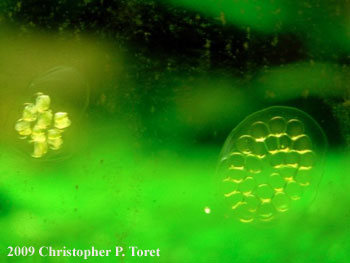 |
Snail eggs
Visible to the naked eye. Usually seen clinging to the glass of the aquarium. |
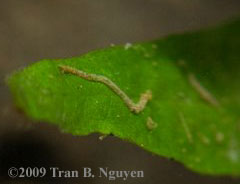 |
Chironomid (midge fly larva)
Visible to the naked eye. Some Chironomid larvae form tubes made of tank debris. When present, there may be many of these little tubes all over the inside surfaces of the tank. Sometimes called tube worms. |
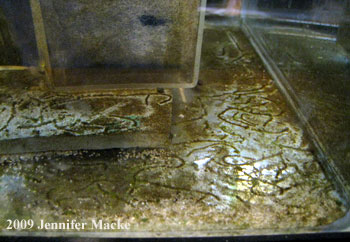 |
Chironomid (midge fly larva)
Another view of tube worms gone wild. |
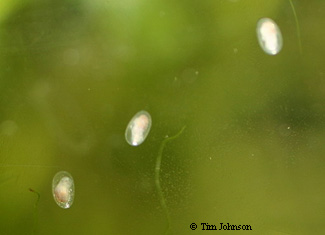 |
Limpets
Visible to the naked eye. Limpets are related to snails, but have a simple flat shell. They are usually seen stuck to the aquarium glass. |
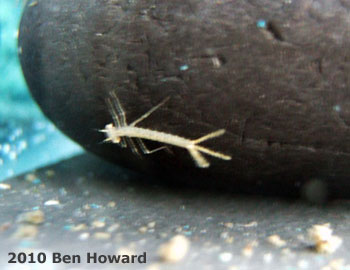 |
Damselfly larva
Visible to the naked eye. This one was found in an aquarium that had no obvious connection to the outdoor world. See forum thread. |
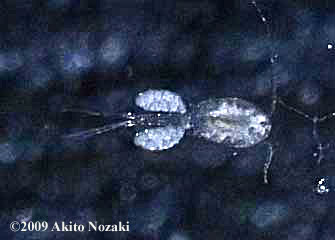 |
Copepod
Copepods are just barely visible to the naked eye. They swim with a jerky motion, similar to the movements of Daphnia. They are distinguished from Daphnia by their shape and smaller size. They are sometimes found as uninvited guests in aquariums. They make good food for caudate larvae. |
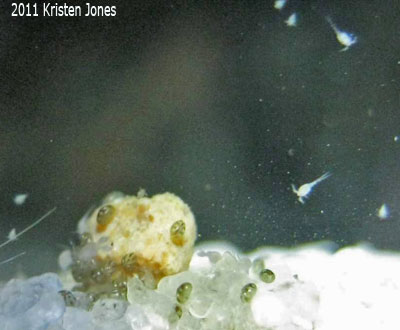 |
Copepods + ?
These copepods are unmistakable. The identity of the other critters (brown striped round looking things on the gravel) is uncertain, but they may have been scuds. See forum thread. |
 |
Worm
Microscopic worm found in aquarium debris; probably an oligochaete. These are very common in healthy aquarium ecosystems. They usually go unnoticed, as they stay hidden in the brown muck at the bottom of the tank. |
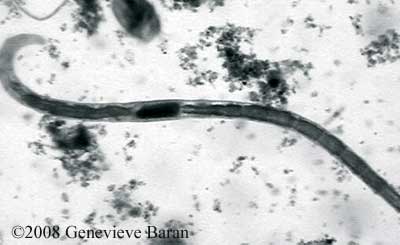 |
Worm
Microscopic worm found in aquarium debris; probably an oligochaete. |
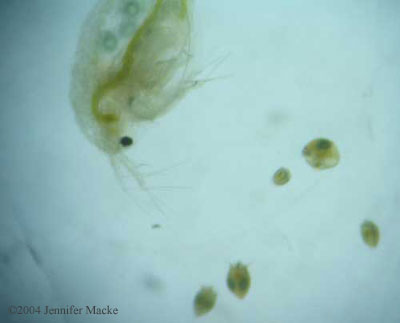 |
Daphnia and ostracods
Daphnia are visible to the naked eye and swim with jerky motions. Daphnia are unlikely to be found in aquariums, unless they are put there as food for the resident fish or amphibians. Ostracods are smaller, shaped like tiny clams, and they do sometimes turn up as accidental fauna. Ostracods swim with a smooth motion, in contrast to the jerky movements of Daphnia. |
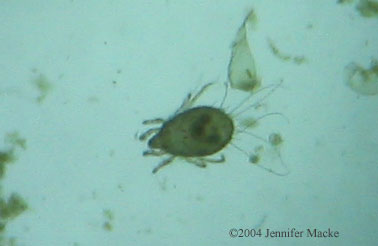 |
Water mite
Aquatic mite. These are very common (and very harmless) in healthy aquarium ecosystems. They usually go unnoticed, as they stay hidden in the brown muck at the bottom of the tank. They are scavengers, not parasites. |
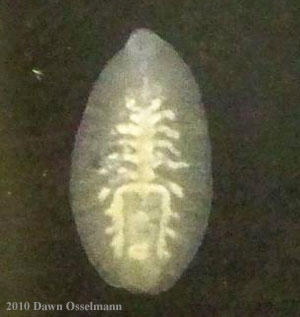 |
Leech
Not all leeches are parasitic, and most that are found in aquariums are harmless to the fish/amphibian inhabitants. They are commonly introduced to aquariums via live blackworms, and they feed on blackworms or other small aquatic worms or micro-organisms. |
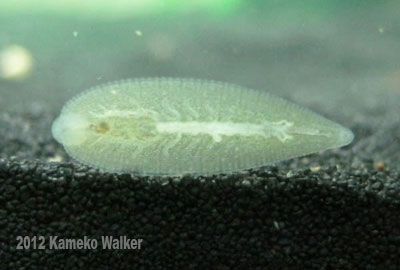 |
Leech |
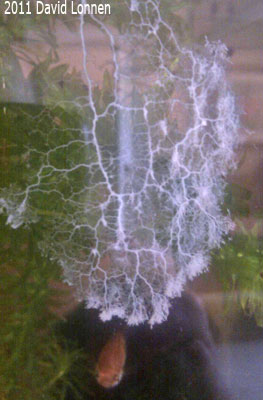 |
Slime mold
Slime molds are fascinating organisms that can live both as single-celled organisms and also as colonies. Many live on land in moist environments, but some are aquatic and can occur in aquariums. This slime mold was observed to move slowly, at a rate of about an inch in 3 hours. It appeared to be feeding off the layer of biofilm on the aquarium glass. See forum thread. |
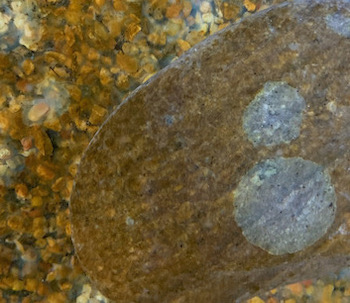 |
Slime mold
If your aquarium has a coating of algae and you notice round bare spots, this is most likely due to the activity of a slime mold. As the slime mold reproduces it eats the algae, and the circular patches get larger. The circles grow noticeably larger within a period of a day or a few days. |
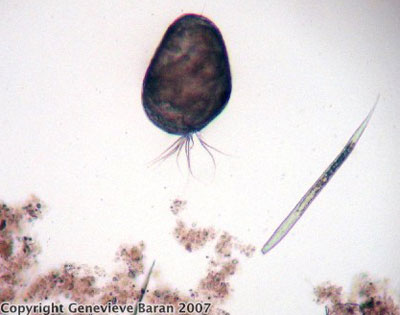 |
Ostracod and Diatom
|
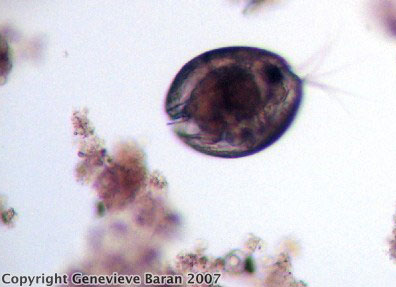 |
Ostracod (seed shrimp)
|
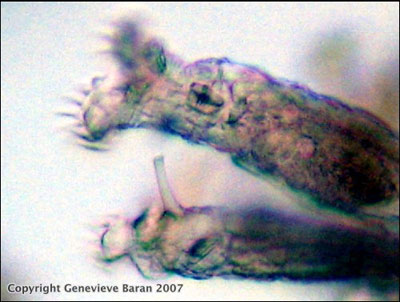 |
Rotifer
|
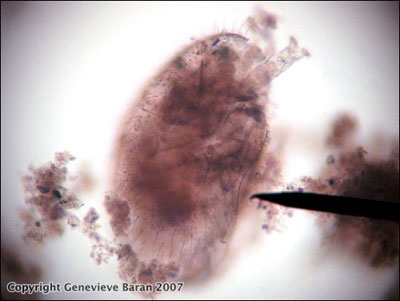 |
?
|
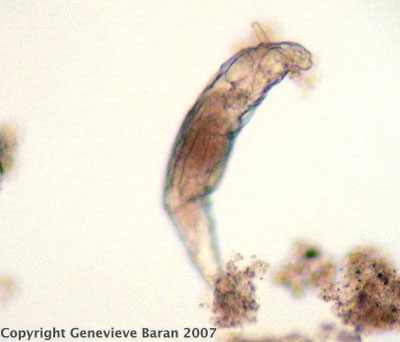 |
?
|
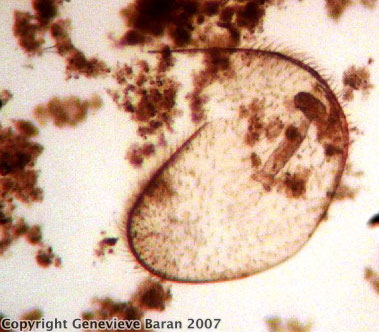 |
?
|
Return to Aquarium Invaders Part 1.
©2008 Caudata Culture. Photographs © as marked.
